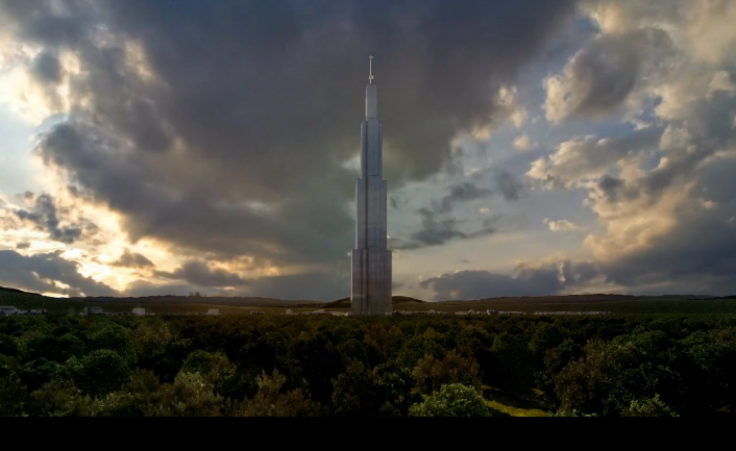Party Newspaper Criticizes China's Skyscraper Obsession

China is already home to the world’s largest building in terms of square footage, but the country is still gunning for the title of tallest building in the globe as well. The current urbanization push has building developers and local governments ever striving for bigger and taller.
Now, the official Chinese Communist Party newspaper, the People’s Daily, has published a commentary on plans to construct the 838-meter (2749-foot) "Sky City" skyscraper in Changsha, Hunan province. When completed, the building will be the world’s tallest, but developers have already run into obstacles getting the necessary permits to begin breaking ground on the project. Last week, it was announced that the Shanghai Tower currently under construction will be the world’s second-tallest building, topping out at 632 meters.
China is building skyscrapers at a blistering pace. According to the People's Daily, by 2016 China will have about 800 skyscrapers (quadruple the present number in the US), and not only in the largest metropolises.
Now, other second and third-tier cities are clamoring for some kind of title or world ranking as they try to compete in the same league as China’s metropolitan cities. Small cities with limited business sectors, but with ample land for development, are scrambling to secure “first high-rise” plans and bragging rights in their less developed regions, the report said.
Guan Yang, a reporter of CCTV, wondered in the Peoples Daily: "Do these high-rises really serve the needs of the country, as more and more people move to the city or they are just a symbol of wealth -- flashy concrete monsters, that block urban skylines?" Concerns are rising that the pace of building these behemoths no longer makes any economic sense, yet such projects proliferate.
According to the South China Morning Post, as cities are courted, even bombarded, with new proposals so regularly, by the time some construction projects that were set to become the tallest buildings in the world are approved, they aren’t even guaranteed to be among the world’s top 10 by the time they are actually finished.
The Morning Post explains that local governments can get developers to build high-investment buildings in less developed areas because they typically are able to promise cheap -- or in some cases, even free -- land in designated economic zones. The report went on to say the buildings are often built as the result of "skyline vanity" and not to satisfy any market demand, which is probably why many ghost cities and empty developments continue to pop up across the country.
However, an architect and professor at Tsinghua University, Jiang Yong, says adding more skyscrapers to larger urban areas is helpful in curbing housing costs and giving improved options for city inhabitants. “The lack of high-rises in urban centers not only results in a severe waste of land, but also increases real estate prices, due to limits on supply,” he told the Morning Post. “If Beijing had as many skyscrapers as Hong Kong, people could spend less time commuting.”
© Copyright IBTimes 2024. All rights reserved.












